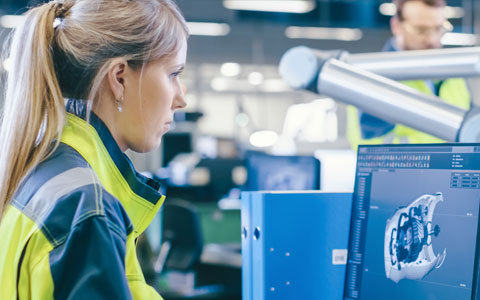Five Critical Insights About Smart Space Technologies
Resilient, productive, and attractive companies create smarter physical spaces to work in.
1%
of survey respondents are either exploring, piloting, or implementing smart space technologies.
The options for how to secure a bright future for your business have advanced significantly. They have also become more complicated. An emergent area of high potential is the physical space where work gets done. Is there potential in making smart investments in spaces that are smarter? The answer is a resounding “yes.”
Smart spaces leverage advanced technologies, sensors, and monitors to transform into more connected, safe, and productive environments to work. Highlights from our recent global survey below make a clear case for why manufacturers around the world are investing in smart space technology and see it as a competitive advantage.
What are smart spaces?
Smart Spaces can be defined as spaces where the application of IT and IoT technologies are used to enhance connectivity, security, and intelligence. The potential of this technology is to enable manufacturers to become resilient, productive, and attractive places to work.
Smart Spaces can be defined as spaces where the application of IT and IoT technologies are used to enhance connectivity, security, and intelligence. The potential of this technology is to enable manufacturers to become resilient, productive, and attractive places to work.
When leaders across the globe were asked to identify their biggest internal challenges to growth, access to talent ranked at the top, and not by a little. As a result, respondents ranked culture, employee engagement, and retention among the top strategic investments to be made in the next 24 months, highlighting the importance of creating smarter spaces.
When leaders across the globe were asked to identify their biggest internal challenges to growth, access to talent ranked at the top, and not by a little. As a result, respondents ranked culture, employee engagement, and retention among the top strategic investments to be made in the next 24 months, highlighting the importance of creating smarter spaces.
Top limits to growth
Top strategic investments
Space utilization now and in the future
- Changes
- Currently Monitored
- Capacity to Monitor
Use cases for smart space technology
Use cases for smart space technology
Use cases for smart space technology
Most valuable aspects of Smart Space Technology
Top use cases for Smart Space Technology
Most valuable aspects of Smart Space Technology
Top use cases for Smart Space Technology
What’s being monitored, and what will be
Top underlying sensor technology used or planned for:
Digital
Operations Optimizations
Employee Productivity
Wireless
Cloud Managed
Safety & Security
Video
Supply Chain Management
Video Technology
Track and trace
Video analytics (VA)
Facial recognition
Conclusion
Getting Started



This blog discusses Meraki solutions that will help future proof your factory.